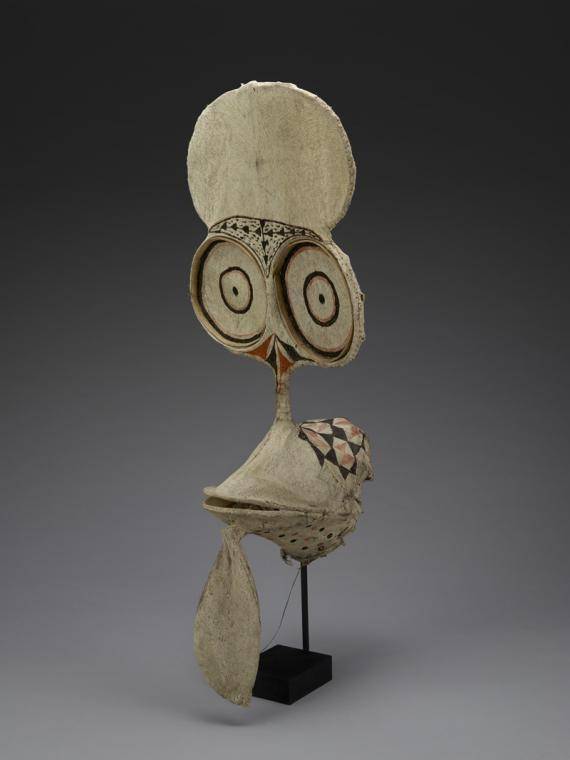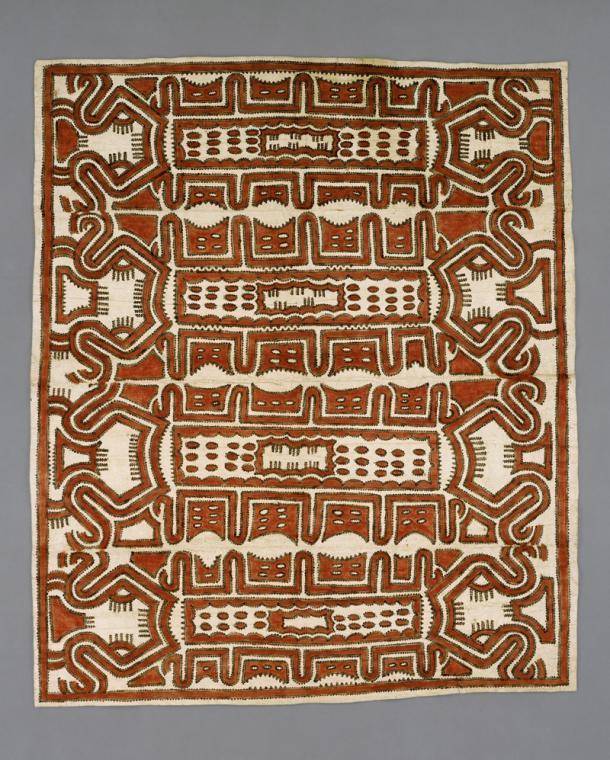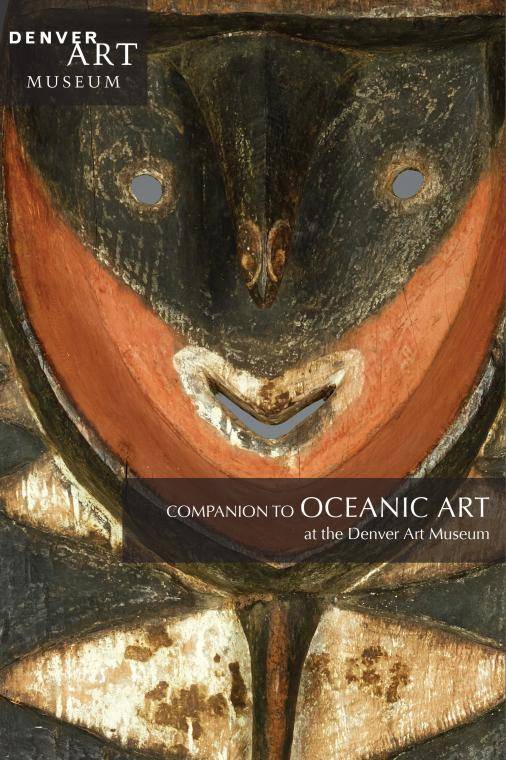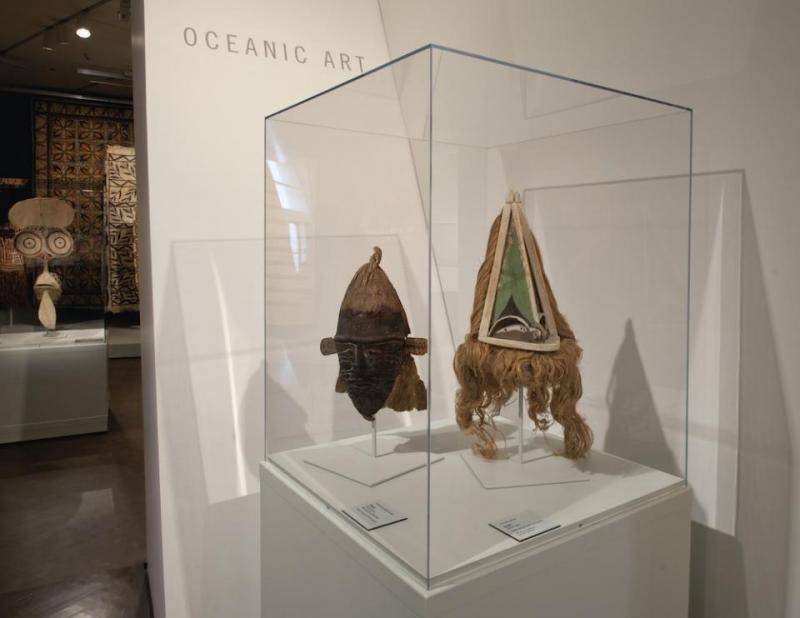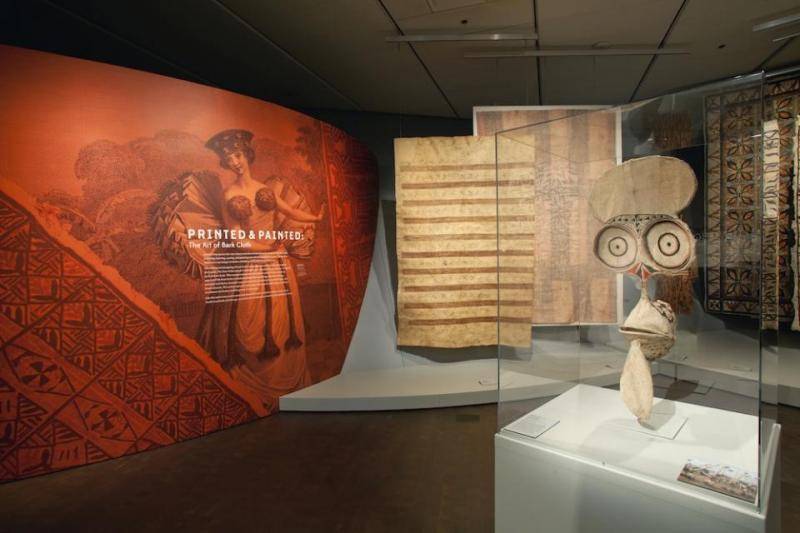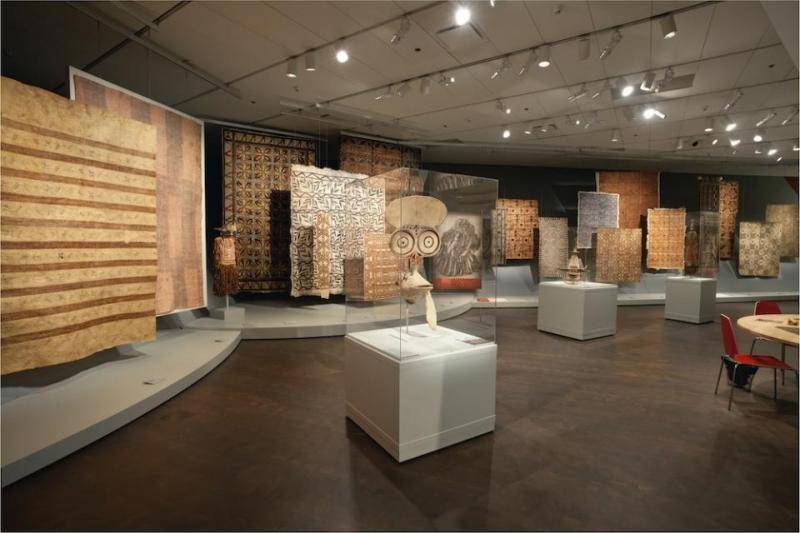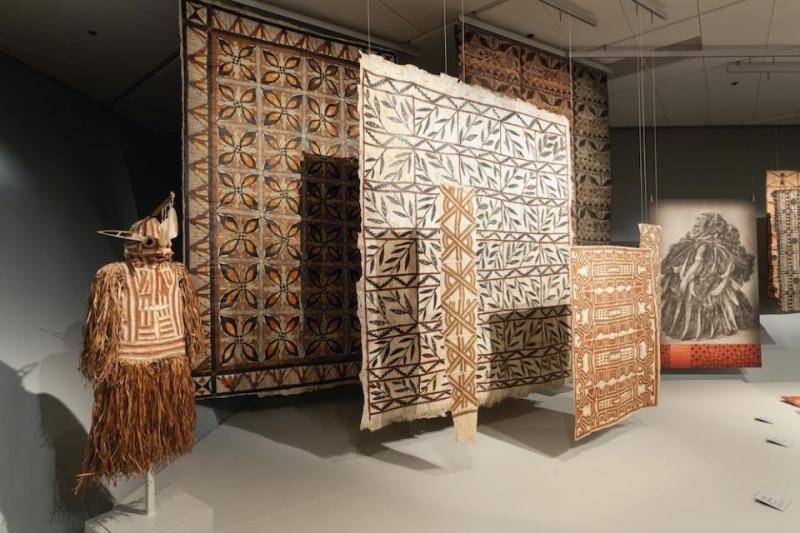This reinstallation of the Joan & George Anderman Gallery of Oceanic Art offers a glimpse at the variety of creative design and ingenious construction possible through the unique medium of bark cloth (or tapa) used across the Pacific. Techniques and styles for decorating vary from island group to island group. Painted, printed, and beaten patterns decorate supple and sometimes expansive bark cloths. Elaborate masks made with tapa stretch over rigid stick or cane frames. In addition to cloth, in New Guinea, coils of solid bark were used to create belts embellished with intricate carvings of figurative and abstract forms.
The gallery space also features an all new family activity area. Draw inspiration from the work of contemporary Samoan artist, Mary Pritchard. Learn about how tapa is made through photos and videos. And, try your hand at making your own patterns by drawing or using upeti (pattern boards) from American Samoa.
A richly illustrated companion guide to the DAM’s Oceanic collection is now available in The Shop and online at www.denverartmuseum.org/shop. Organized by the four major regions of Oceania (Polynesia, Melanesia, Micronesia, and Australia), the 100-page book contains 80 color photos, including close-ups that allow the reader to see incredible details that would not be visible even in the gallery.
Vivian Gegewo, Papua New Guinea, Tapa Painting, 2004. Bark and paint. Purchased with funds donated in memory of George G. Anderman, 2004.134.
This detailed survey of the museum's Oceanic art collection is available at The Shop at the Denver Art Museum and online.

